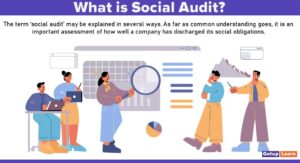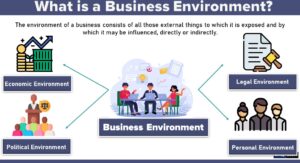Table of Contents
What is Industrial Sickness?
According to 1985 the Sick Industrial Companies (Special Provision) Act “Sick Industrial Company” specify that an industrial company (registered for not less than seven years) showing accumulated losses equal to or exceeding its net worth at the end of any financial year, or suffering cash losses also during that financial year and the immediately preceding year.
Here, the “Cash loss” indicates computed loss without making provision for depreciation etc. Moreover, a company will be known as “incipiently sick” which has already eroded 50% or even more of its peak net worth during any of the preceding five financial years.
However, the Sick Industrial Companies Act, 1985 has been finally repealed with effect from 1st December 2016. The provision of sick companies is presently found under the Companies Act, 2013 under Chapter XIX. Now, the sickness is linked to the capability of the company to repay its defects or not.
In this article, we are going to discuss industrial sickness and various aspects related to industrial sickness. Because industrial sickness is an important problem related to the development of a country.
The problem of industrial sickness does exist equally in both developing and developed countries. But, it is essential to solve the problem that exists in a developing country like India for achieving a higher growth rate and maintaining an adequate level of employment.
Symptoms of Industrial Sickness
Given below are some of the symptoms of industrial sickness:
- Shortage of Liquid Funds to Meet Short-term Financial Obligations of Creditors as Also to Meet Statutory Obligation
- Non-payment
- Underutilization of capacity
- Return on Investments
- Maintenance of Financial Ratios
Shortage of Liquid Funds to Meet Short-term Financial Obligations of Creditors as Also to Meet Statutory Obligation
This is the first sign of sickness when an enterprise cannot pay for the purchase of raw materials when it delays the payment to its labour. Besides this, when the industrial unit in all violation of legal provisions, stops meeting its statutory obligations, such as contributions to the Employees Provident Fund, Payment of Sales Tax etc, then it is seen as the beginning of suffering from industrial sickness.
Non-payment
Non-Payment of interest on term loans or non-payment of instalments gives another signal of impending sickness. An industrial enterprise needs to have a mutually beneficial relationship with the bankers.
To that extent timely payment of loans is very important, Defaulting payments damage the relationship. In that case, the banks will not raise the credit limit; rather it will curtail the future provisions of extending loans.
Underutilization of capacity
Every unit of production for its survival must cross the break-even point. If a firm operates below its break-even point, then it is incurring a loss and is bound to grow sick. It is a function of fixed cost, sale and variable cost.
Fixed cost remains fixed for a period of time. In order to utilize the full capacity raw materials will have to be procured; labour will have to be deployed. Overheads will have to be extended.
If the produced goods can be sold at a good selling price, that helps in making the desired contribution towards coverage of fixed cost and then to profit. Underutilization of capacity has lots of hidden costs for the firm. This needs to be avoided. Or else, this may lead to industrial sickness.
Return on Investments
A production industrial unit should be capable of making an adequate provision for depreciation. For obtaining a rate of return on investment or the net profit as a proportion of the total investment in the enterprise has to be included. A comparison of the rate of return with the prevailing rate of interest is indicative of the health of the enterprise.
Maintenance of Financial Ratios
If the ratio of current assets to current liabilities is less than 1:1 an enterprise is considered sick. In other words, it indicates losses and also the declining liquidity of the firm. A declining debt-equity ratio shows movement towards sickness.
Causes of Industrial Sickness
These are the following causes of industrial sickness:
- Lack of managerial skills
- Non-observance of Management Principles
- Underutilization of Capacity
- Government Policies
- Easy Approval of Small-scale Units by the State
- Faulty Location of Industrial Unit
Lack of managerial skills
Most of the entrepreneurs who establish small scale industries (SSI units), do not have good knowledge of management. The overhead costs of these units are very high. These enterprises do not have easy access to credit.
In absence of that, they have to borrow at high rates of interest from the lenders in the market. Because of lack of training, the entrepreneurs are not aware of the schemes of government and financial institutions regarding the extension of credit.
Non-observance of Management Principles
Usually, the rate of interest on the capital employed in SSI units is very high. The businessman of Small industries start the enterprises with a low equity base and make no effort to build internal financial resources during the good years.
Underutilization of Capacity
This is another important factor responsible for sickness. Most industrial sectors do not utilize their full capacity due to certain reasons e.g. lack of working capital, lack of demand, and shortage of raw materials. Those industrial units which are permanently unable to utilize the optimum level of capacity slowly enter into sickness.
Government Policies
The govt. policies also affect the feasibility and success of small industries units. Sometimes, the change in the government policies affects adversely the functioning of small industries units, hence these units become sick.
Easy Approval of Small-scale Units by the State
In order to popularize schemes for the development of entrepreneurship, sometimes proposals are prepared in a hurry without exploring all the details. If the assessment of the viability of the projects is not made with adequate care, especially with regard to financial viability, the SSI unit is likely to become sick.
Faulty Location of Industrial Unit
Once a decision is made about the location of industrial units and manufacturing is started, it involves the fixed cost. It becomes a point of no return. The fixed cost will have to be recovered. A faulty decision in this respect will create serious long term problems for the firm affecting its profitability.
FAQ
What is Industrial Sickness?
According to 1985 the Sick Industrial Companies (Special Provision) Act “Sick Industrial Company” specify that an industrial company (registered for not less than seven years) showing accumulated losses equal to or exceeding its net worth at the end of any financial year, or suffering cash losses also during that financial year and the immediately preceding year.
What are the symptoms of industrial sickness?
Given below are some of the Symptoms of Industrial Sickness:
1. Shortage of Liquid Funds to Meet Short-term Financial Obligations of Creditors as Also to Meet Statutory Obligation.
2. Non-payment
3. Underutilization of capacity
4. Maintenance of Financial Ratios
5. Underutilization of capacity
6. Growth of Excessive Inventories
What are the causes of industrial sickness?
These are the following causes of industrial sickness:
1. Lack of managerial skills
2. Non-observance of Management Principles
3. Underutilization of Capacity
4. Government Policies
5. Easy Approval of Small-scale Units by the State
6. Faulty Location of Industrial Unit
How can government policies be the causes of industrial sickness
The govt. policies also affect the feasibility and success of small industries units. Sometimes, the change in the government policies affects adversely the functioning of small industries units, hence these units become sick.




